
Developing and supporting locally owned businesses in rural and Native communities is critical to increasing both rural prosperity and equity. But significant government and private enterprises are engaged in rural regions that are owned and operated outside the area. Often, these outside owners make self-interested decisions that deeply and negatively affect the rural communities involved without any consultation with rural stakeholders. In effect, these systems players, in some decisions, treat rural people and resources and communities as dispensable inputs that can simply be exploited for profit.
The full diversity of rural community stakeholders and outside owners and users of rural resources, including employee resources, must work together to establish relationships and be in regular, trusting, and transparent exchange so that the community can plan, develop, and maximize its assets equitably and sustainably, and so that outside owners make decisions that produce benefit and reduce damage for both the rural community and themselves.
BUILDING BLOCK EVIDENCE
Evidence suggests the Rural Stakeholder Equity building block is important because inclusive governance and ownership supports more socially desirable outcomes and a greater likelihood of commitments that benefit local communities.1 Recent research on multi-stakeholder and community benefits agreements recommends paying attention to existing power structures underlying agreements,2 among documented best practices.3 For example, among Indigenous communities, community-led impact assessments, regional political organizing, and recognition of legal rights can shift power to communities in negotiations.4
Efforts to increase corporate accountability include the Triple Bottom Line, focusing on people, planet, and prosperity, via an “accounting framework that incorporates three dimensions of performance: social, environmental and financial”.5 Certified B Corporations, for example, are “legally required to consider the impact of their decisions on their workers, customers, suppliers, community, and the environment,” and are among models for corporate social responsibility.6 Local hiring requirements can also support these goals, such as proposed “Community Pillar” standards, like holding large businesses to standards such as an “annual obligation to deploy at least 1 percent of company profits toward bettering their local employment footprint”.7
Models that can retain local equity as outcomes include local ownership and regional development programs focused on equitable rural wealth creation, with local values informing indicators for measurement and evaluation. Experts suggest using local values to inform which indicators to use for evaluation, noting a Tribal community may wish to “emphasize measures of cultural wealth and continuity”.8 Rural development hub models are among these models and designed to include people, places, and firms that have been historically marginalized in the development action and the benefits.9 Examples of regional development programs include the Reclaiming Appalachia Coalition, founded in 2016, The Reclaiming Appalachia Coalition is a regional collaboration that seeks to spur mine reclamation projects throughout Central Appalachia that are responsive to community needs and interests and accelerate the growth of new, sustainable sectors.10
The tension between private, public, and community-held lands and who has decision-making power are also relevant in tourism and ecotourism. While evidence suggests that some forms of tourism can contribute to land conservation and the well-being of local community members, often the power is maintained and benefits accrued to entities outside of the local community and risks and harm accrued to the local community.11 Examples include: tourist fishers depleting resources of local stock, commodification of local cultures in ways that reinforce stereotypes, displacement of local community for the creation of conservation areas, or due to increased real estate values driven by tourists.11 Community-based tourism provides an alternative.
Other research highlights the role of capital in rural areas. Experts have historically suggested “alternative, nontraditional venture capital programs and policy alternatives to promote the availability of equity capital in rural areas”.12 Field literature also suggests that Rural Business Investment Companies (RBICs) programs could be expanded. RBICs are “double bottom-line” companies, seeking investments that will benefit rural communities and provide good returns on investment. This model has “some similarity to traditional venture capital funds” but requires 75% or more of funds to be made in rural areas with a population of 50,000 or less.13
Curated Resources for rural stakeholder Equity

Learnings on Rural Migration and Displacement
Insights for community leaders to balance rural migration, retain longtime residents, and develop more equitable local economies.
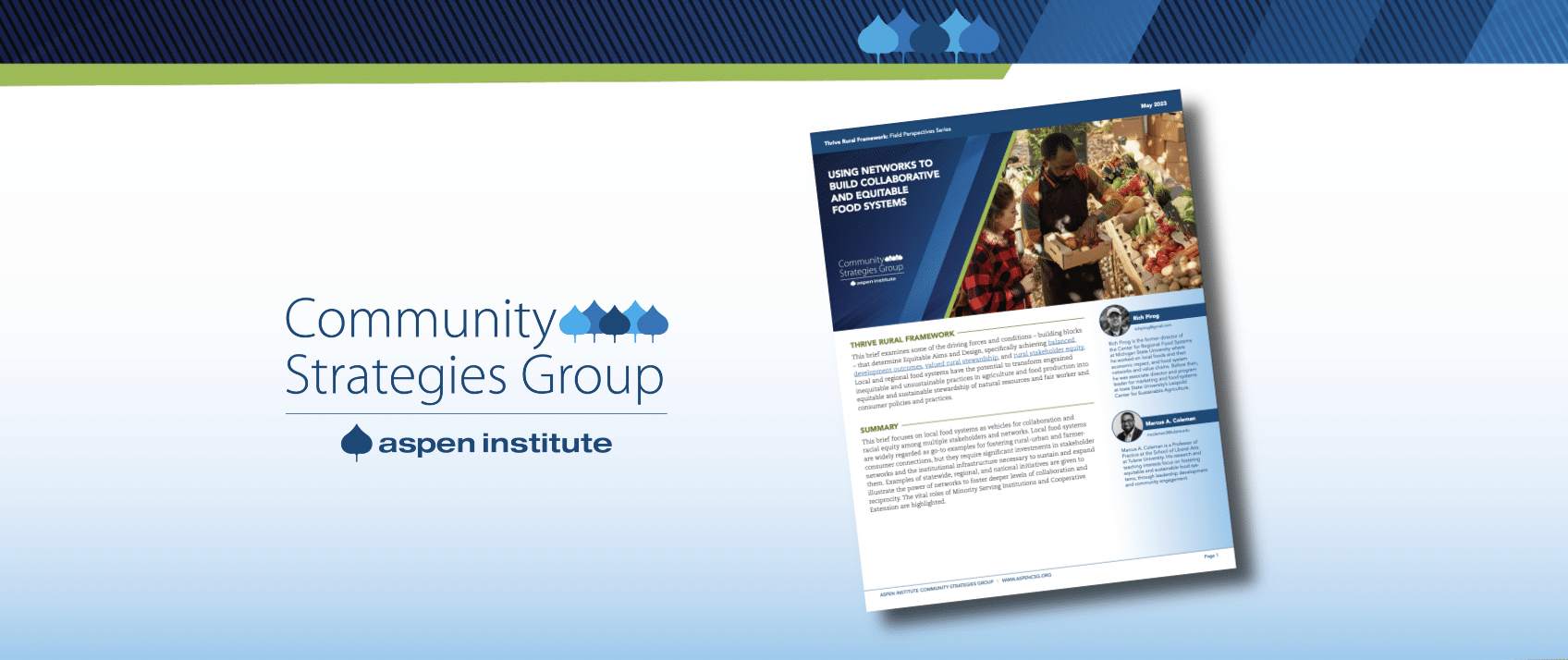
Using Networks To Build Collaborative & Equitable Food Systems
This brief focuses on local food systems as vehicles for collaboration and racial equity among multiple stakeholders and networks.
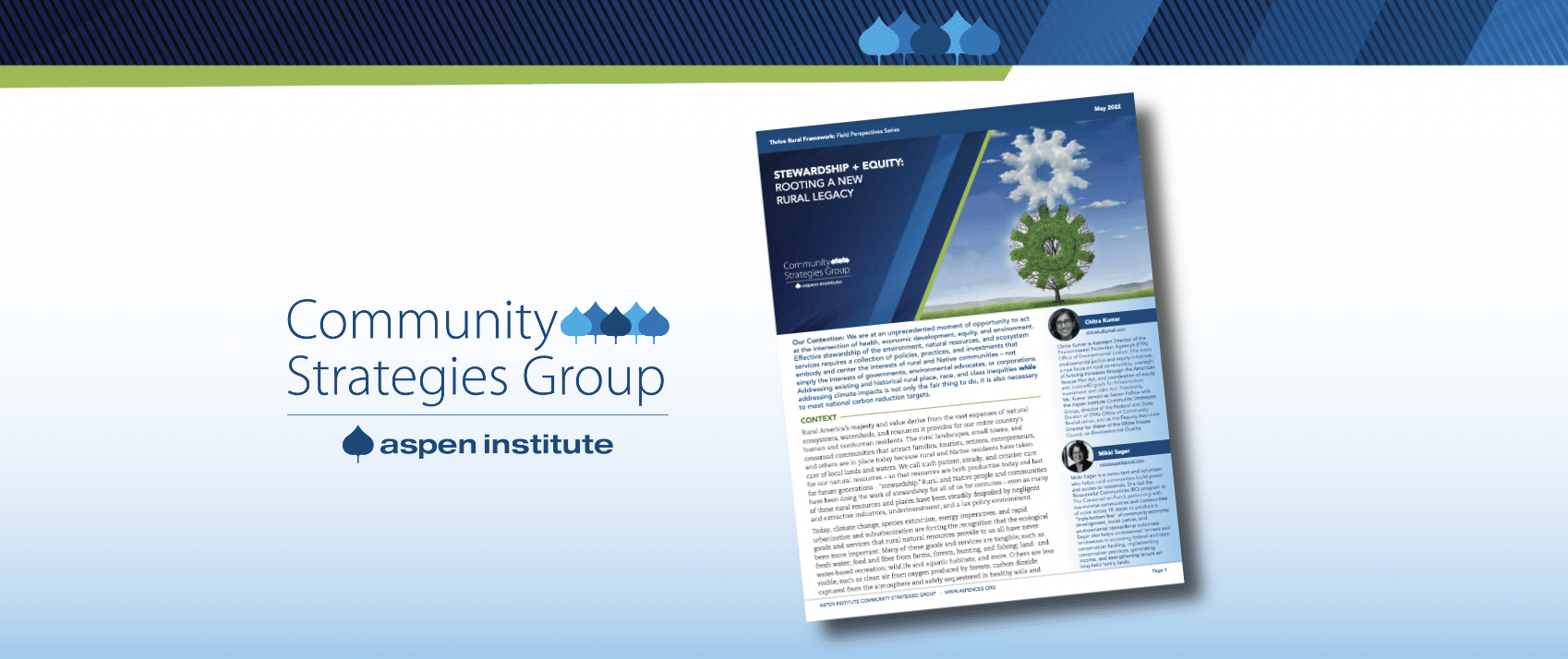
Stewardship + Equity: Rooting a New Rural Legacy
Rural and Native communities have been stewarding the land for generations. Many are developing new ways of growing nature and…
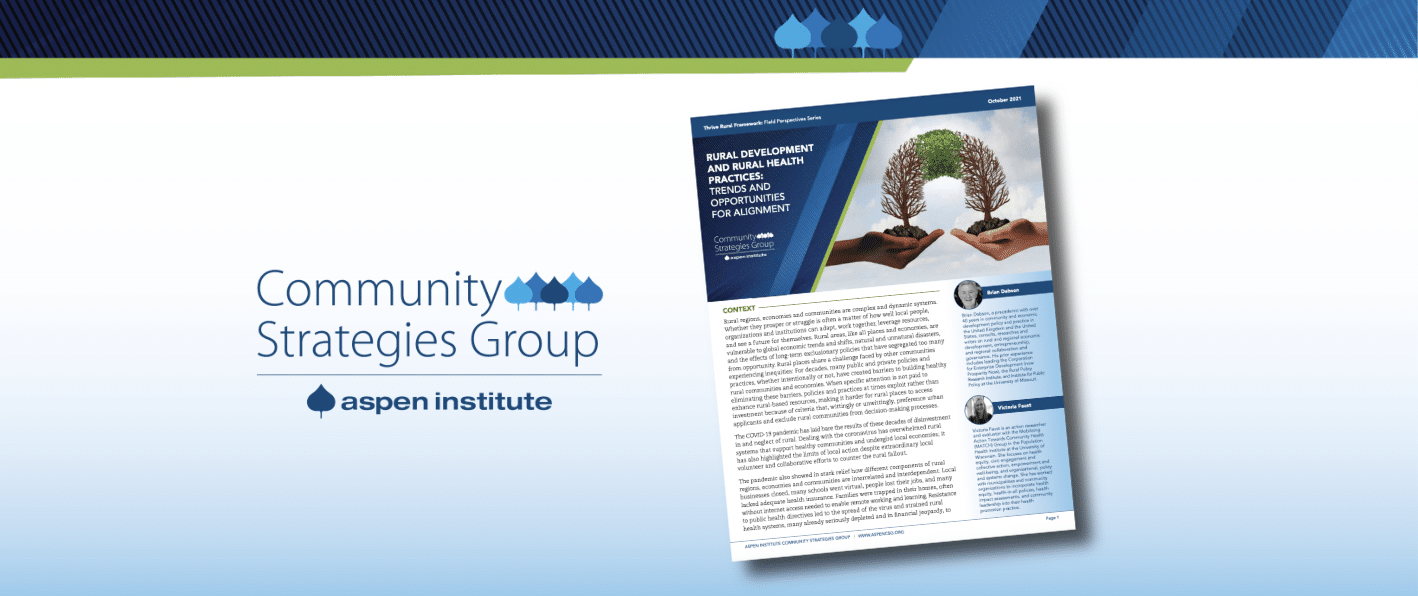
Rural Development & Health Alignment Opportunities
This first in the Thrive Rural Field Perspective Series describes the main trends and catalysts for change that emerged from…
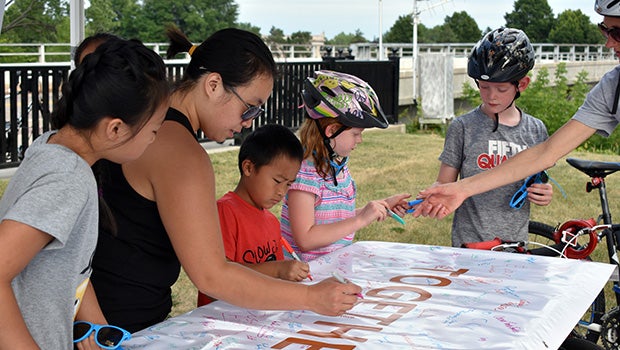
Place-Based Shareholder Engagement
Last week, the Business Roundtable, a powerhouse collective voice for business interests, released a new statement redefining corporate “purpose.” In it, they…
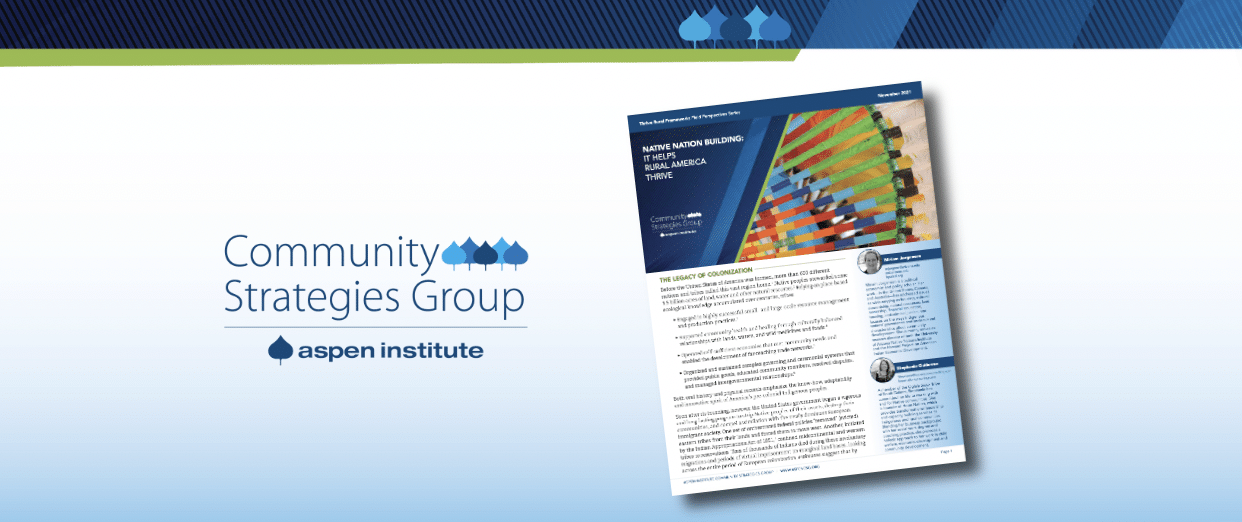
Native Nation Building: It Helps Rural America Thrive
Native nations and rural communities, working side-by-side and together, can strengthen the potential for thriving rural regions.
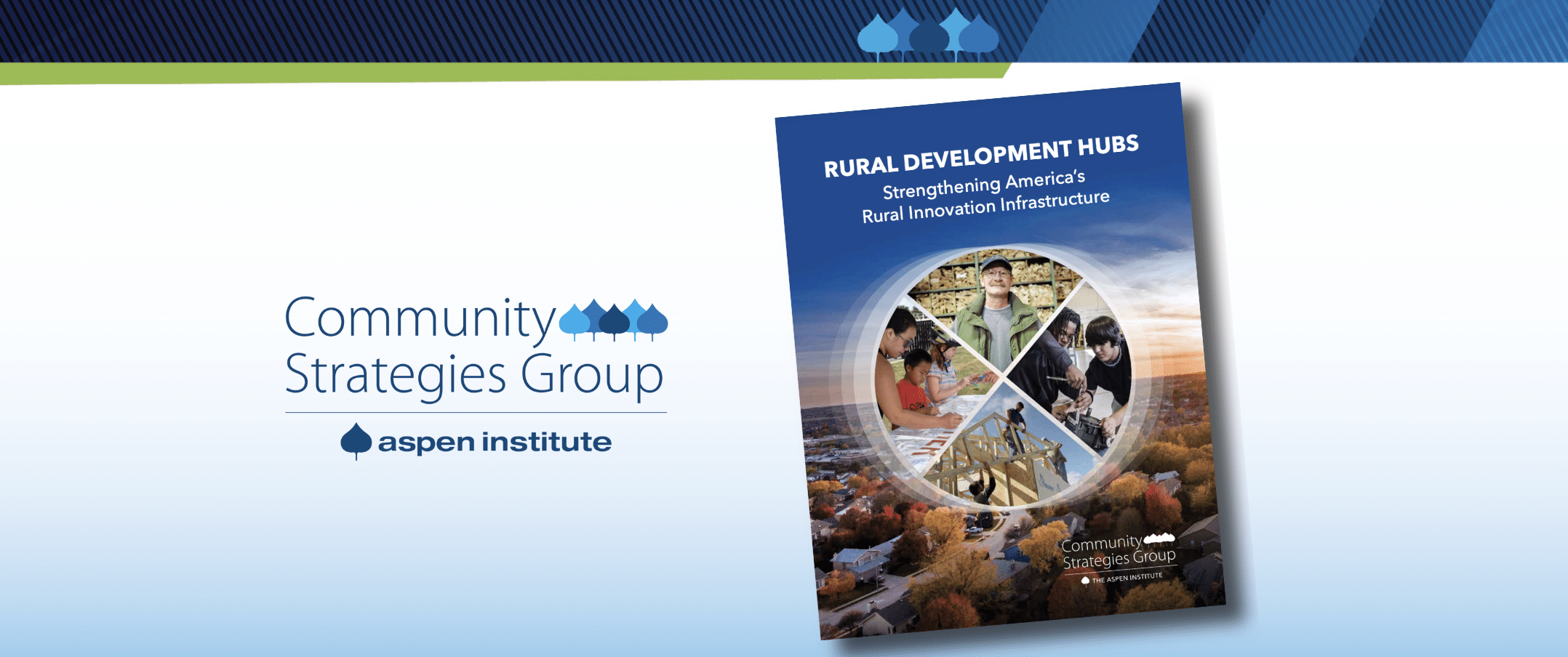
Rural Development Hubs Report
Rural Development Hubs are a specific set of intermediaries that are doing development differently in rural America. They are main players advancing an asset-based, wealth-building, approach to rural community and economic development.
Field Items

RESTORATION AND RENEWAL: THE NEW APPALACHIAN ECONOMY
Appalachian Voices
The Reclaiming Appalachia Coalition shares Just Transition case studies shedding light on Appalachia’s ongoing economic transition.
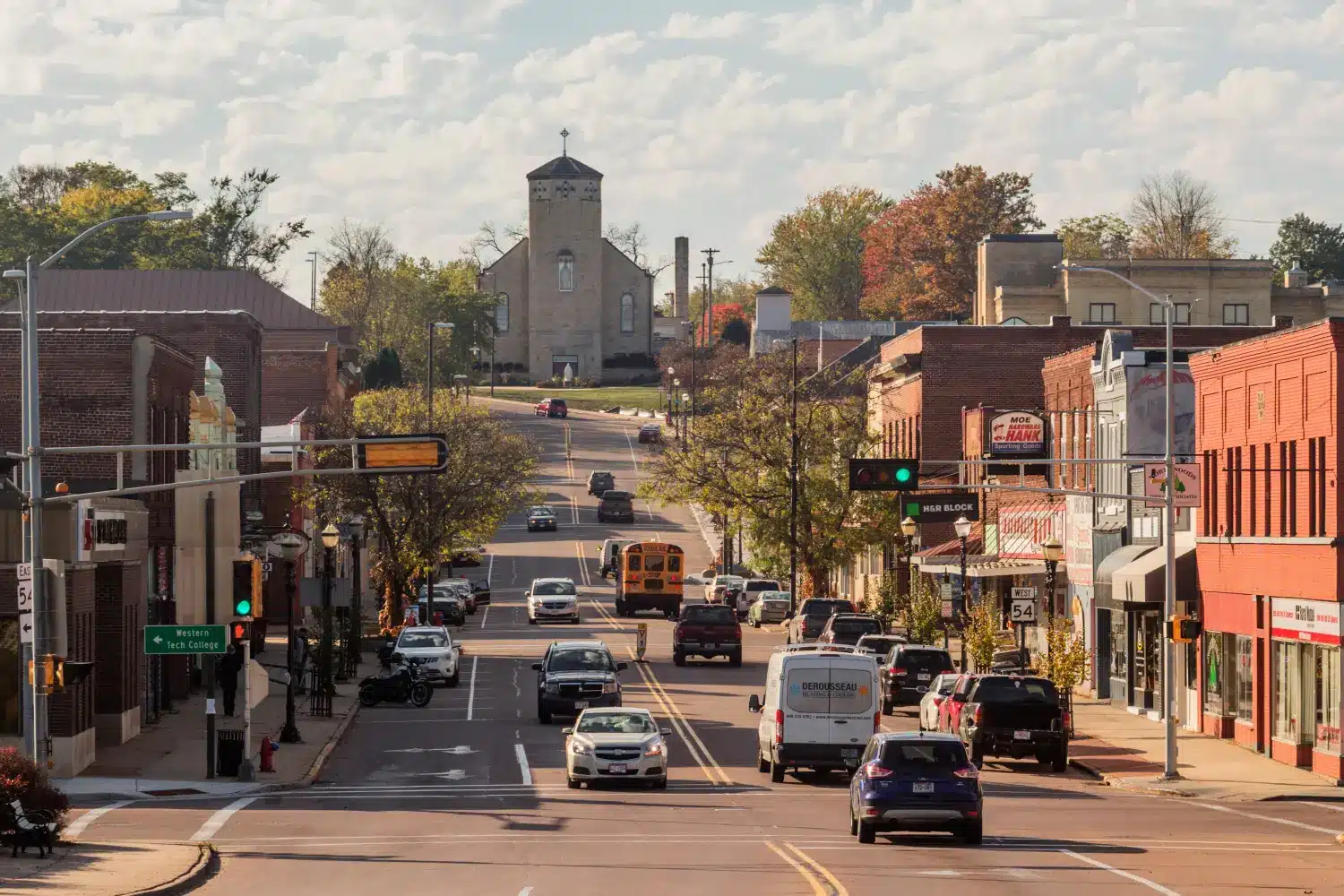
WHAT IS TRIPLE BOTTOM LINE?
Indiana Business Research Center
This article reviews the TBL concept, explains how it can be useful for businesses, policy-makers and economic development practitioners and highlights some current examples of putting the TBL into practice.

B-CORP PROGRAMS AND TOOLS
B Corps

The ABC’s of Cooperative Impact
NCBA CLUSA
Analysis of cooperatives in a number of different economic sectors.

COOPERATION WORKS SUCCESS STORIES
Cooperation Works
Stories of how co-ops keep income in the community, building wealth, creating jobs and reinvigorating economies.

CO-OPS: A KEY PART OF RURAL AMERICA
U.S. Department of Agriculture

STAKEHOLDER ENGAGEMENT—A CHECKLIST FOR RURAL EDUCATION SYSTEMS
Office of Elementary & Secondary Education
A blog to help ensure their stakeholder engagement approaches are effective in rural districts.

REIMAGINE APPALACHIA COMMUNITY BENEFITS MATERIALS
ReImagine Appalachia
ReImagine Appalachia has gathered tools and resources on community benefit agreements that are useful for all rural communities.

RURAL STAKEHOLDER ENGAGEMENT
Rural SE Hub
A resource on rural stakeholder engagement from Scotland.
We see the framework as a living document, which necessarily must evolve over time, and we seek to expand the collective ownership of the Thrive Rural Framework among rural equity, opportunity, health, and prosperity ecosystem actors. Please share your insights with us about things the framework is missing or ways it should change.
